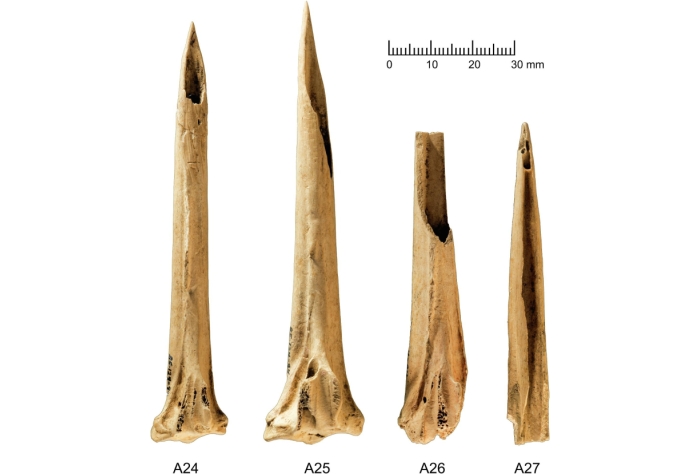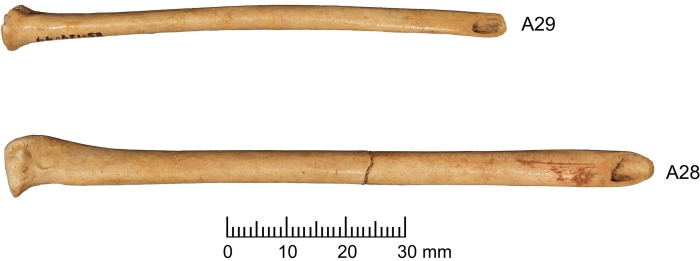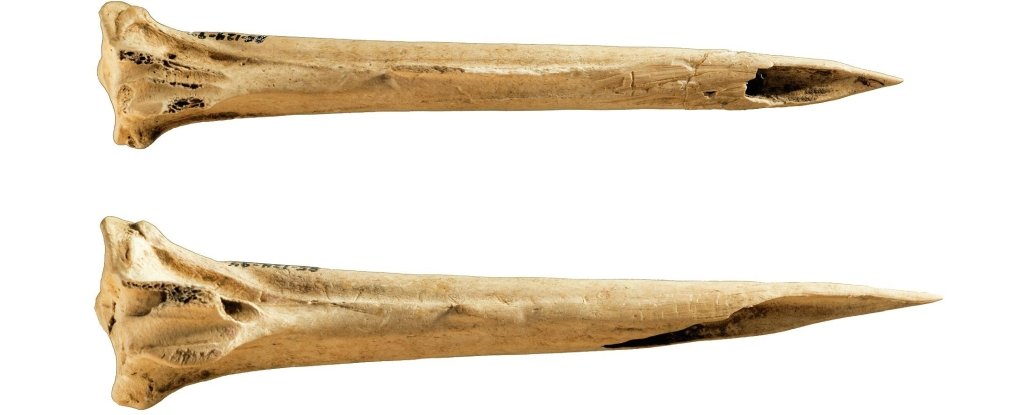Products You May Like
A set of cut and sharpened turkey bones excavated decades ago from an ancient Native American grave seem to be the oldest tattooing tools we’ve found to date.
A new, detailed analysis of these artifacts has allowed archaeologists to determine that they were likely used to tattoo skin, bringing us a little closer to understanding the history of body modification, suggesting it was a persistent practice among Native Americans for at least 3,000 years.
Tattooing, although considered subcultural in some societies, is actually about as traditional as you can get. We have evidence that humans around the world have been decorating their skin by puncturing it with ink-laden sharp implements for thousands of years.
Human skin doesn’t easily survive the ravages of time, yet multiple tattooed mummies dating back to over 5,000 years ago have been uncovered, suggesting it was rather common. Nevertheless, the tools our ancestors used for this art have been harder to find.
 The tarsometatarsus bones. (Deter-Wolf et al., J Archaeol Sci Rep, 2021)
The tarsometatarsus bones. (Deter-Wolf et al., J Archaeol Sci Rep, 2021)
This could partially be because sharpened tools found by archaeologists tend to get filed under the rather unhelpfully broad category of “awl”.
So, a team of archaeologists led by Aaron Deter-Wolf of the Tennessee Department of Environment and Conservation decided to take a closer look at sharpened bone tools recovered in 1985 from Fernvale, a Native American archaeological site.
“In this study we move beyond basic morphological classification by combining zooarchaeological analysis, technological assessment, use-wear analysis, and materials science studies to examine an assemblage of bone tools from an ancient Native American site in central Tennessee,” they wrote in their paper.
“Our analysis reveals that approximately 3500-1600 BCE, occupants of the Fernvale site employed sharpened turkey (Meleagris gallopavo) bone tools as tattooing implements, and that both red and black pigment remains are directly associated with these artifacts.”
The assemblage consisted of a number of the implements – four sharpened turkey tarsometatarsus bones, two of which had points intact, and two smaller radius bones, with traces of pigment still discernible in the grain.
 The radius bones. (Deter-Wolf et al., J Archaeol Sci Rep, 2021)
The radius bones. (Deter-Wolf et al., J Archaeol Sci Rep, 2021)
These bones were subjected to very close scrutiny – microscopy at magnification up to 140X, allowing the researchers to catalog tiny manufacturing marks and wear patterns; and X-ray fluorescence spectroscopy to help identify the pigments.
These were compared to the results of a previous paper, in which a different archaeologist crafted sharpened bones from a white-tailed deer, and used them to tattoo pig skin, to determine the manufacturing and wear patterns this would produce.
The spectroscopy revealed that red and black pigments on the radius bones were likely derived from iron oxide (ocher) and carbon materials – both recorded as traditional tattooing materials in archaeological literature.
The marks were also consistent with the wear markings on the deer bones, and the pigment deposits echoed the deer bone pigment smears. Bivalve shells had also been found in the burial, also with pigments; these, the researchers said, could have been used as pigment vessels during the tattooing process.
The team’s conclusion that these bones represent the earliest known tattooing tools is very convincing, and would mean that the practice of tattooing in North America could be even older than we thought. Previously, the earliest known tool was a cactus spine implement found in Utah, dated back to around 2,000 years ago.
And, the team notes, their findings emphasize the problems associated with assigning bone tools to broad categories, and how a more rigorous approach could reveal different types of tools that may be hiding in plain sight.
“Combined with future use-wear examinations, elemental assessments, and contextual analysis of other artifact collections,” they wrote, “the evidence from the Fernvale site provides a significant data point for examinations of social organization and ritual complexity among Archaic period forager societies of the southeastern United States.”
The research has been published in the Journal of Archaeological Science: Reports.
H/T: Science News
